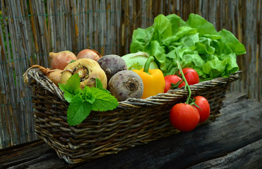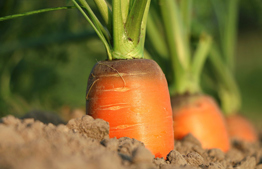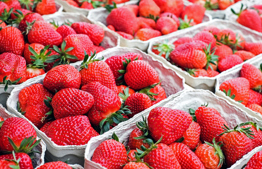Kilei Ilan - Grafting: a Review

The review below lists the standard stock and scion pairs used in nurseries in Israel. Noted are the cultivar pairs that are halachically permissible for grafting are as well as those that that are problematic. Permissible alternatives are presented when such exist.
Updated to May 5778, Sivan 2018
This list also appears in the book Hilchot Ha'aretz, a Torah VeHa’aretz publication, 5777 [Hebrew].
For the summerized list and a PDF colored file of this list, see here.
Foreword
The vast majority of fruit trees today are grafted. Most of them are grafted in a halachically permissible fashion (similar species, min bemino), while others are not (different species, min be’eino mino), and at times there is not a definite delineation of these categories (uncertain species, safek mino).
There are various professional rationale involved in grafting. Nurserymen want the tree to produce a specific fruit and select the scion accordingly. The stock (also called rootstock), on the other hand, is selected for its compatibility with soil conditions, pest-repellent abilities, the quality and quantity of its yield, and its season of yield, among other factors.
The difficulty faced by nurserymen and private customers when ordering saplings is that even if they can find out the exact names of the stocks and scions, this information alone does not indicate whether the sapling is grafted in a forbidden or permissible manner, for the following reasons:
- Halachic definitions of species often differ from their botanical definitions.
- Stocks are manufactured at nursery stock production facilities or at nurseries for cuttings for use as rootstocks only. These cuttings often do not bear fruit (when there is vegetative propagation or hybrid stocks, these generally do not bear fruit), which is an important factor in determining its variety from a halachic perspective, as explained below.
The purpose of this review, first and foremost, is to raise the awareness of those who wish to plant trees (both private individuals) about the issues involved in fruit trees that are problematically grafted.
We would like to focus on the problem of kila’im so that before ordering a sapling, people will know to ask us their questions; we at Torah VeHa’aretz Institute will do our best to relate to each individual question while taking into consideration all of the halachic parameters and professional considerations in the case at hand.
In this review, we cite the most common rootstocks used. We indicate the stock cultivar, the stock-scion pairs that are permissible, as well as those that are considered kila’im, providing permissible alternatives when such exist. We also mention the problematic stocks that do not fit into a clear halachic category. For these we offer halachic rulings, addressing each variety individually, after having consulted with major poskim.
Halachic Review
- The Rambam states (Kila’im 1:5):
כִּלְאֵי הָאִילָנוֹת הֲרֵי הֵם בִּכְלַל מַה שֶּׁנֶּאֱמַר: "שָׂדְךָ לֹא תִזְרַע כִּלְאָיִם". כֵּיצַד? הַמַּרְכִּיב אִילָן בָּאִילָן כְּגוֹן שֶׁהִרְכִּיב יִחוּר שֶׁל תַּפּוּחַ בְּאֶתְרוֹג אוֹ אֶתְרוֹג בְּתַפּוּחַ, הֲרֵי זֶה לוֹקֶה מִן הַתּוֹרָה בְּכָל מָקוֹם בֵּין בָּאָרֶץ בֵּין בְּחוּצָה לָאָרֶץ
“[Grafting] a mixture of trees is included in the prohibition “You shall not sow your field with mixed species” [Levit. 19:19]. What is implied? When a person grafts a tree [of one species] unto a tree [of another species], e.g., he grafted a branch of an apple tree to an etrog tree or one from an etrog tree to an apple tree, he is liable for lashes according to Scriptural Law in any place, whether in the Land of Israel or in the Diaspora.”
- The biblical prohibition against grafting includes only the act of grafting. That is, inserting a shoot/branch of one species into a stock of another species. It is also prohibited to plant a tree grafted in a prohibited fashion, but the poskim dispute whether the source of the prohibition is biblical or rabbinic.
- A tree grafted in a prohibited manner (from two different species, min be’eino mino) is prohibited to cultivate: one may not water or fertilize it, etc. According to most poskim this prohibition is rabbinic.
- In cases where it is uncertain that there are two different species involved (safek mino), it is permitted to: (1) cultivate the grafted tree and (2) commission a non-Jew to plant the tree. When the scion-stock pair is of safek mino status, some poskim even permit Jews to bud graft and plant such trees when they are planted together with their original clod of soil.
- The Rambam adds (Kila’im 3:5) that if two varieties resemble each other they are considered halachically permitted for grafting, the determining factor being their visual appearance. For this purpose the Rambam rules that the important criteria here is the similarity in appearance of the leaves or, alternatively, a similarity in the appearance of the fruit, provided that their flavors are not very different.
- It is forbidden to graft a fruit tree onto the stock of a tree that does not bear fruit (ilan serak).
As stated above in the foreword, in problematic cases it is important to consult with a competent halachic authority to find alternative solutions and to find ways of grafting or planting in a permissible manner.
Professional Review
The list below appears in alphabetical order with the exception of citrus fruits, which are listed according to the names of the rootstock. The names of the fruit trees and stocks are listed in Hebrew as well, for the convenience of English-speaking Israelis purchasing trees from nurseries here in Israel.
|
Almond |
Carob |
Fig |
Loquat |
Nectarine |
Pecan |
Pomegranate |
Walnut |
|
Apple |
Cherry |
Grapevine |
Lychee |
Olive |
Persimmon |
Quince |
|
|
Apricot |
Date |
Guava |
Macadamia |
Peach |
Pistachio |
Sweet cherry |
|
|
Avocado |
Feijoa |
Kiwi |
Mango |
Pear |
Plum |
Sweetsop |
|
Almond (שקד). Grafted onto two types of stocks:
- Bitter almonds (שקד מר). Alnem (אלנם) bitter almond rootstocks are often used. Status: It is possible to be lenient.
- Peach/almond hybrid stocks. In recent years, use of these stocks is becoming more widespread, which support larger trees and increased yield:
- 27-29. Peach/plum hybrid. Status: forbidden.
- Citation (סיטיישן). Peach/plum hybrid. Status: forbidden.
- GF-677. Peach/almond hybrid. Leaves similar to almond, pit similar to almond and tastes like an almond. Exterior similar to a peach and tastes like a peach. Status: permissible when necessary.
- GF-557. Peach/almond hybrid. Leaves are similar to almond. Fruit resembles part almond, part peach. Status: It is possible to be lenient and graft almonds onto this stock.
- GF-749. Same as GF-557.
- Hansen 536 (הנסן). Peach/almond hybrid. Leaves similar to almond, pit similar to peach and tastes like a peach. Status: permissible when necessary.
- GN-15 (Garnem) (גרנם). Also a peach/almond hybrid. To date, this stock has not been thoroughly investigated from a halachic perspective and should be considered safek mino.
Apple (תפוח). Grafted onto apple seedlings, such as: Malus (מאלוס), Hashabi (חשבי), M9, and MM106. Status: permissible.
Apricot (משמש). Generally grafted onto apricot seedlings, such as: Raanana (רעננה), Canino (קנינו), and Klabi (כלבי). Status: permissible.
There are, however, other stocks used that are considered kila’im and are forbidden for apricot trees:
- Marianna (מריאנה). Plum stocks are used for heavy soil.
- Myran (מירן) . Peach/plum hybrid.
- 27-29. Peach/plum hybrid.
- Citation (סיטיישן). Peach/plum hybrid.
- Cadaman (קדמן). Peach/almond hybrid.
Avocado (אבוקדו). Grafted onto stocks from Mexican or Western India avocado seedlings. Status: permissible.
Carob (חרוב). Grafted onto carob seedlings. Status: permissible.
Cherry, sweet cherry (דובדבן וגודגדן). Grafted onto cherry seedlings:
- Mazzard (מזרד). Status: permissible.
- Colt (קולט). Status: probably permissible.
- Mahaleb (מהלב). Status: probably safek mino, so it should be planted by a non-Jew.
- Gisela (גיזלה), MM2. Status: it is not clear today whether this rootstock is considered of the same species, and permissible, or safek mino.
Date (תמר). Propagation from date suckers; botanically it is impossible to graft dates.
Feijoa (פיג'ויה). Grafted onto feijoa seedlings. Status: permissible.
Fig (תאנה). Generally not grafted. Propagation from cuttings (vegetative). In cases of variety change, it is grafted onto a fig. Status: permissible.
Grapevine (גפן, ענבים). Generally grafted on grapevine stocks: Richter (ריכטר), Paulsen (פולסן), Ruggeri (רוג'רי). Status: permissible.
Guava (גויאבה). Generally grafted onto guava seedlings or its cuttings. Status: permissible.
Kiwi (קיווי, אקטינידיה). Grafted onto kiwi seedlings. Status: permissible.
Loquat (שסק). Generally grafted onto loquat seedlings. Status: permissible.
Sometimes grafted onto quince (חבוש) rootstocks for heavy soil, such as: BA29, A, C7, and Sydo (סידו). Status: forbidden.
Lychee (ליצ'י). Grafted onto lychee seedlings or onto lychee cuttings. Status: permissible.
Macadamia (מקדמיה). Grafted onto macadamia seedlings. Status: permissible.
Mango (מנגו). Grafted onto stocks from mango seedlings: 13/1, Saber (סבר), and 49. Status: permissible.
Nectarine (נקטרינה). See Peach and nectarine.
Olive (זית). Grafted onto stocks from olive cuttings (today there are methods of propagation from cuttings, without grafting).
Peach and nectarine (אפרסק ונקטרינה). These are grafted into three types of stocks:
- The standard stocks used are from peach seedlings: Nemaguard (נמגרד), Baladi (בלדי),
and 198/12. Status: permissible. - Sometimes they are grafted onto Alnem (אלנם) almond stocks for their resistance to root-knot nematode (RKN) and to promote early blooming. Status: forbidden.
- Stocks that are almond/peach hybrids. Note: there is no professional advantage to this, since they produce a tree that is too vigorous. From a professional perspective, it is advised to use these hybrid stocks when replanting (see below):
- GF-677. Hybrid of peach and almond. The leaves are similar to almond leaves, the pit is similar to an almond, and the pit tastes like an almond. The exterior is similar to a peach and it tastes similar to a peach. Status: Permissible for peaches, when necessary.
- GF-557. Hybrid of peach and almond. The leaves are similar to an almond. The fruit looks somewhat like a peach and somewhat like an almond. Status: in my humble opinion, the same as stock GF-677.
- GF-749. See stock GF-557.
- GN-15 (Garnem) (גרנם). Also a hybrid of peach and almond. To date, this combination has not been looked into adequately from a halachic perspective, and should be treated as safek mino.
- Citation (סיטיישן). A peach/plum hybrid. Status: safek mino.
Pear (אגס). More than 95% of pears in Israel are grafted onto quince (חבוש) rootstocks, including: BA29, A, C7, and Sydo (סידו), and this poses a serious problem of kila’im. Status: forbidden.
Permissible alternatives:
- For Spadona (ספדונה) pears: pear stocks imported from the USA, such as OHF.
- For Coscia (קוסציה) pears: Pyrus betulifolia (בטלפוליה).
Pecan (אגוז פקאן). Grafted onto stocks from pecan seedlings. Status: permissible.
Persimmon (אפרסמון). Grafted onto stocks of persimmon cultivars: Virginia (וירג'יניה), Triumph (טריומפ), Kaki (קאקי), and Lotus (לוטוס). Status: permissible.
Pistachio (pistacia) (אלה, בוטנה, פיסטוק). Types that are grafted onto pistacia cultivars are permitted.
For Atlantic Pistacia (אלה אטלנטית) rootstocks, grafting should be performed by a non-Jew.
Plum (שזיף). Grafted onto three types of stocks:
- Plum stock varieties: Marianna (מריאנה) and Myrobalan (מירובלאן). Status: permissible.
- Almond stocks: Alnem (אלנם). Used in calcareous soil for enlarging fruit or promoting early bloom. Status: forbidden.
- Peach/almond hybrid stock, or peach/almond/plum:
- GF-677. Peach/almond hybrid. Status: forbidden.
- Hansen 536 (הנסן). Status: forbidden.
- GN-15 (Garnem) (גרנם). Status: forbidden.
- GF-655. Peach/plum hybrid. The leaves are similar to both plum and peach leaves, while the fruit more closely resembles a plum. Additional research is necessary.
- Myran (מירן), Ferciana (פרסיאנה). Leaves similar to plum. No known fruit (no fruit). For this reason it seems that it is possible to be lenient, in extenuating circumstances, to graft plums only as long as both grafting and planting are performed by a non-Jew.
- Citation (סיטיישן). Leaves similar to a plum, as well as the fruit. It may be possible to permit this rootstock.
Pomegranate (רימון). Propagation though cuttings without grafting.
Quince (חבוש). Grafted onto stocks from quince seedlings and cuttings. Status: permissible.
Sweet cherry (גודגודן). See Cherry.
Sweetsop (sugar apple) (אנונה). Grafted onto sweetsop stocks. Status: permissible.
Walnut (אגוז מלך). Grafted onto stocks from walnut seedlings. Status: permissible.
Citrus Fruits
The issues involved in grafting citrus fruits are relatively less complex. The survey below is listed according to stock, since all stocks are used for all types of citrus trees, in keeping with the professional guidelines for every location.
It seems that from a halachic standpoint, it is possible to classify the types of citrus fruits into three categories:
- Oranges and easily peelable citrus fruits (tangerine, mandarin, etc., kumquat)
- Grapefruit, pomelo, oroblanco (sweetie)
- Lemon and etrog
In practice, it is possible to be lenient and consider all types of citrus as safek mino. That is, all citruses can be grafted by a non-Jew (preferably by bud grafting), and then planted by a non-Jew. Thereafter, Jews can cultivate these trees. The list below cites scion-stock pairs that can be grafted and planted by a Jew.
In summary: When purchasing a grafted citrus tree from a nursery, if the scion-stock pair appears in the list below, it can be planted by a Jew. Otherwise, it should be planted by a non-Jew.
|
Bitter orange |
Citrumelo |
Poorman |
Rangpur RTX-803 |
812 |
Troyer |
| Cleopatra |
Macrophylla |
Rangpur |
Rough lemon |
Poorman |
Volkameriana |
Bitter orange (חושחש). Similar to orange in leaves and fruit. Status: permissible for oranges and easily peelable citrus fruit (it is possible that one could be lenient for lemons as well).
Citrumelo (ציטרומלו). An orange variety. Status: permissible for oranges and easily peelable citrus fruit.
Cleopatra (קליופאטרה). Similar to easily peelable citrus. Status: permissible for all oranges and peelable citrus fruit.
Macrophylla (מקרופילה). Similar to lemon. Status: permissible for lemon.
Poorman (Citrus grandis) (פורמן). It seems to be permissible for grapefruit, pomelo, and oroblanco.
Rangpur (רנגפור). The fruit is shaped like an orange. Status: permissible for oranges and easily peelable citrus fruit.
Rangpur RTX-803 (RTX-803 רנגפור). Status: permissible for oranges and easily peelable citrus fruit.
Rough lemon (לימון גס). Fruit similar to an orange, tastes similar to an orange, leaves similar to a lemon, and taste is also not far from a lemon. Status: It seems that it is possible to be lenient and graft lemon as well as oranges and easily peelable citrus onto this stock.
812. Looks like an orange. Status: permissible for oranges and easily peelable citrus fruits.
Troyer (טרויאר). Similar to orange, but leaves are similar to a trifoliate orange. Grafting should be performed by a non-Jew even for oranges and easily peelable citrus fruit.
Volkameriana (וולקה מריאנה). Looks like an orange. Status: permissible for oranges and easily peelable citrus fruit (it is possible that one could be lenient for lemons as well).




